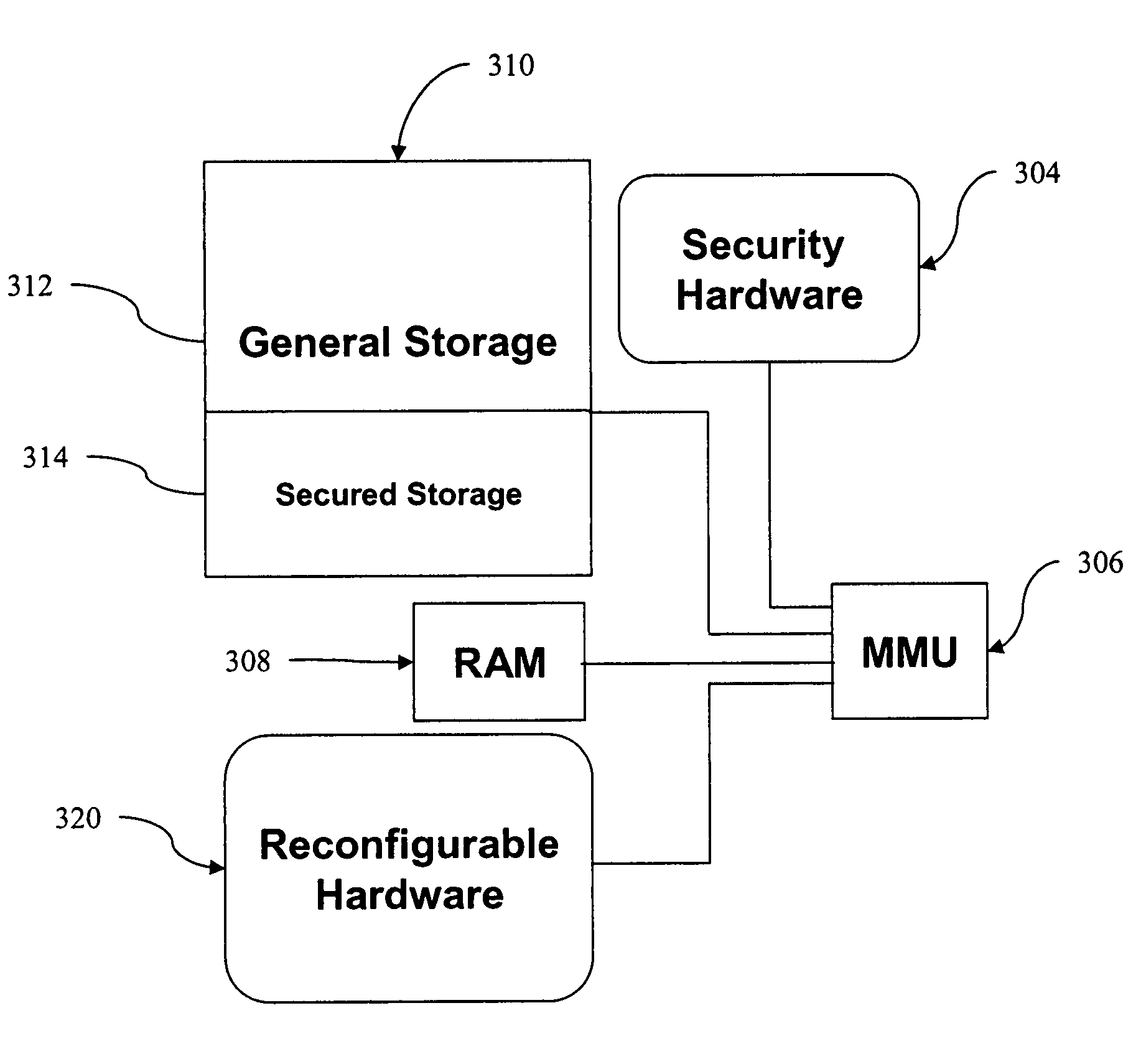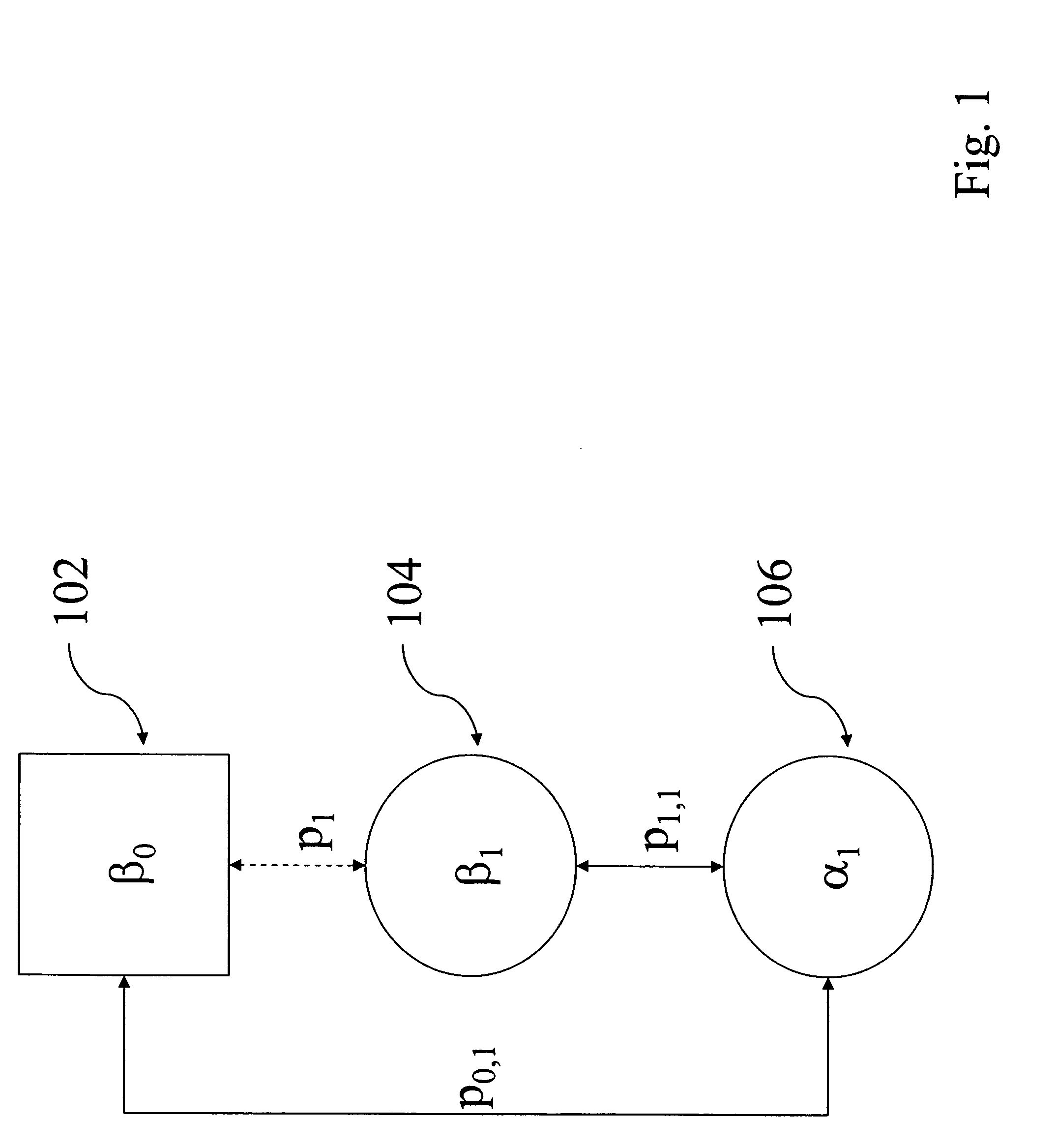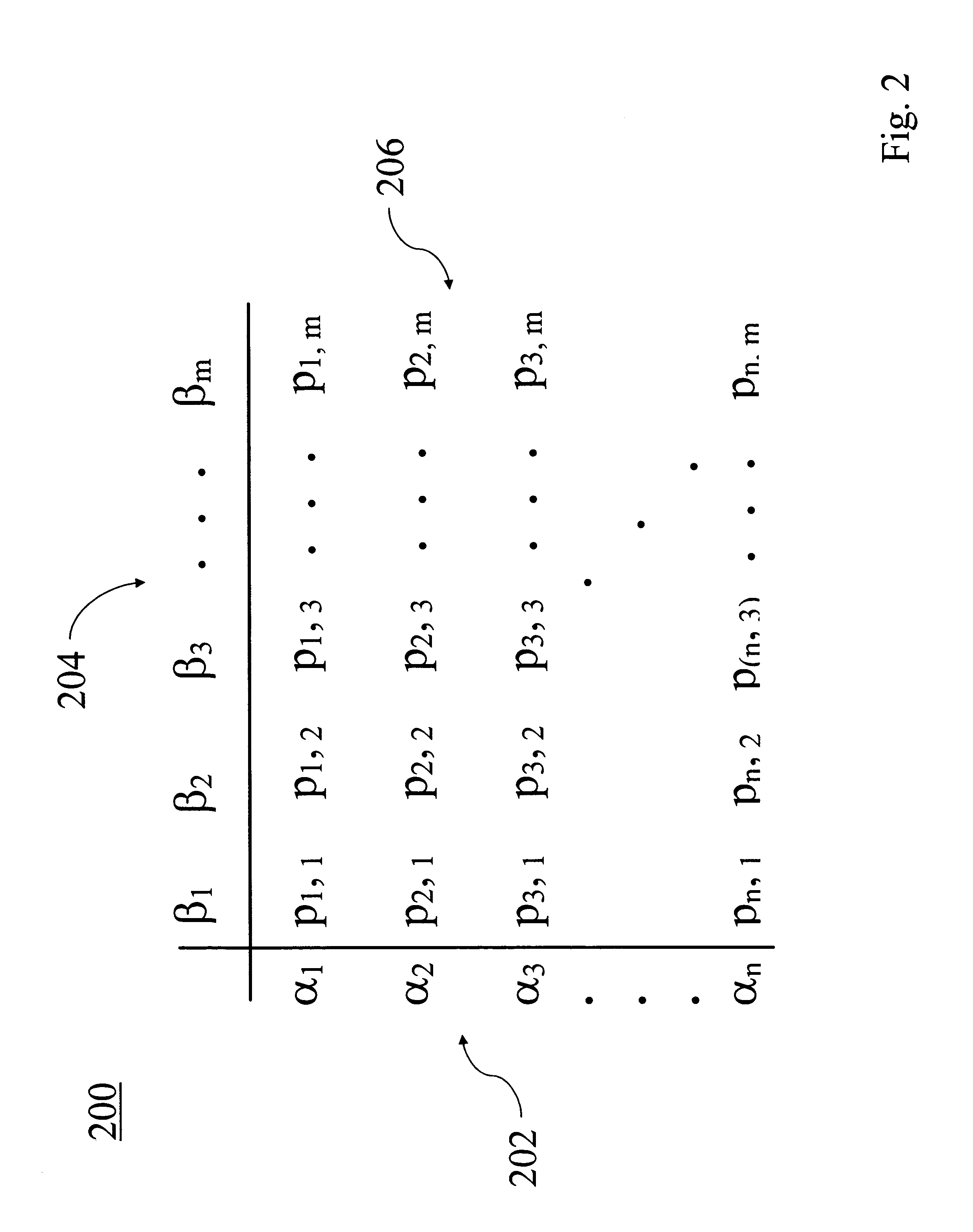Using hardware to secure areas of long term storage in CE devices
a technology of ce devices and hardware, applied in the field of device security systems, can solve the problems of lack of security of long term memory in ce devices, insufficient security of file systems of most operating systems, and limited methods
- Summary
- Abstract
- Description
- Claims
- Application Information
AI Technical Summary
Benefits of technology
Problems solved by technology
Method used
Image
Examples
Embodiment Construction
[0035]Currently, a consumer electronic device may be secured from software based tampering and misuse only through the use of secured hardware components, as current operating systems do not provide adequate security measures. Additionally, due to the undesirable costs associated with device tampering (i.e., device failure or improper / undesirable functionality), it may be desirable to implement a high security method for firmware reconfiguration of reconfigurable hardware as well as updates to one or more of an operating system and security applications. Accordingly, various embodiments of the present invention may provide security of device upgrades and protection from device tampering through strong encryption, using dedicated hardware circuitry, of system critical software and data (e.g., operating system kernel, security applications, secret cryptographic keys, firmware configurations, etc.).
[0036]According to one embodiment of the invention, device upgrades may be distributed t...
PUM
 Login to View More
Login to View More Abstract
Description
Claims
Application Information
 Login to View More
Login to View More - R&D
- Intellectual Property
- Life Sciences
- Materials
- Tech Scout
- Unparalleled Data Quality
- Higher Quality Content
- 60% Fewer Hallucinations
Browse by: Latest US Patents, China's latest patents, Technical Efficacy Thesaurus, Application Domain, Technology Topic, Popular Technical Reports.
© 2025 PatSnap. All rights reserved.Legal|Privacy policy|Modern Slavery Act Transparency Statement|Sitemap|About US| Contact US: help@patsnap.com



